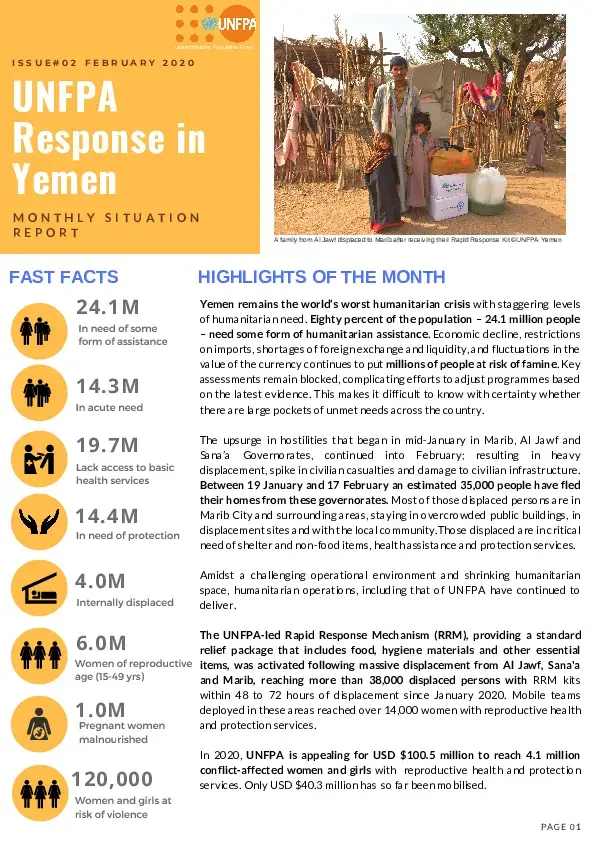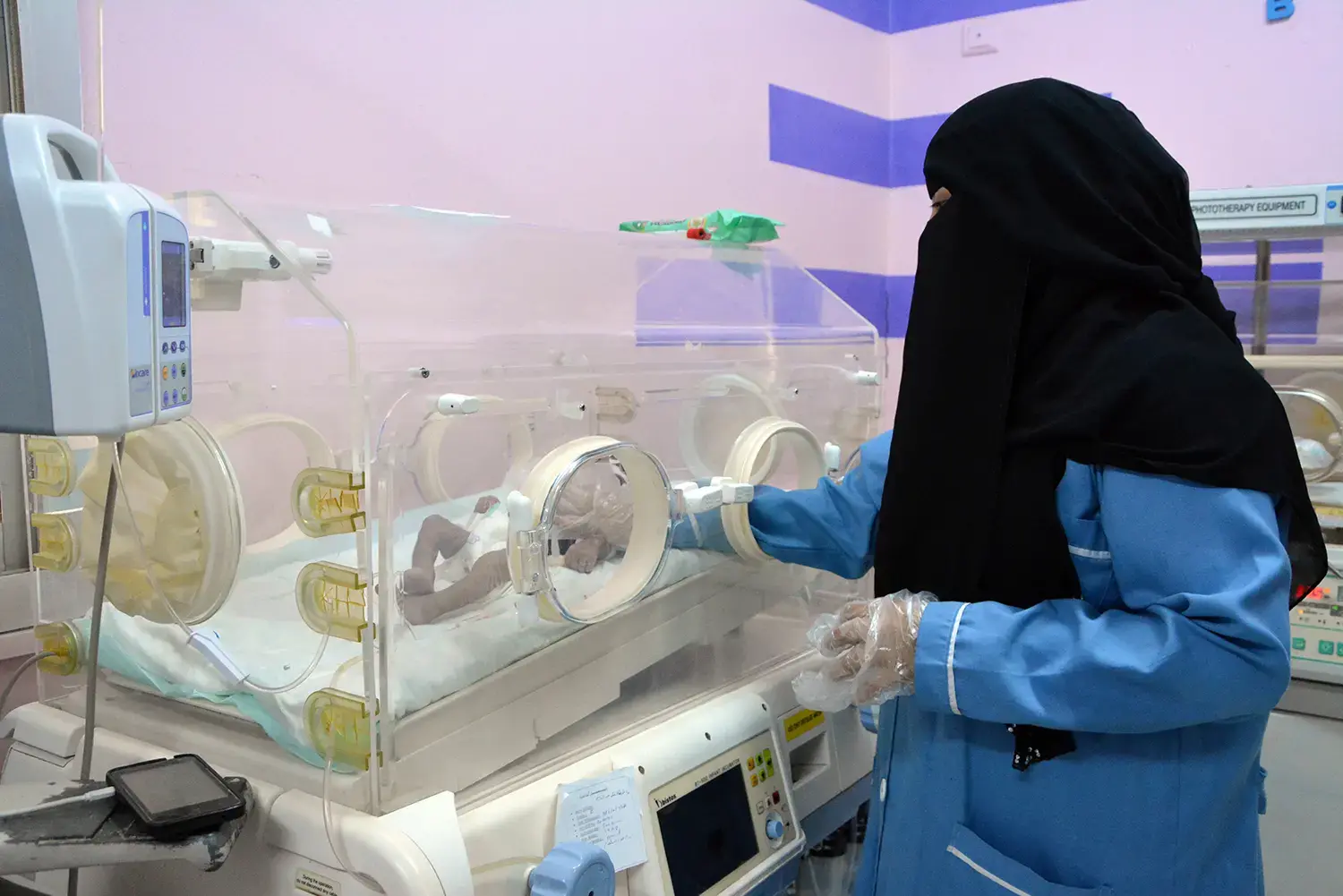Yemen remains the world’s worst humanitarian crisis with staggering levels of humanitarian need. Eighty percent of the population – 24.1 million people – need some form of humanitarian assistance. Economic decline, restrictions on imports, shortages of foreign exchange and liquidity, and fluctuations in the value of the currency continues to put millions of people at risk of famine. Key assessments remain blocked, complicating efforts to adjust programmes based on the latest evidence. This makes it difficult to know with certainty whether there are large pockets of unmet needs across the country.
The upsurge in hostilities that began in mid-January in Marib, Al Jawf and Sana’a Governorates, continued into February; resulting in heavy displacement, spike in civilian casualties and damage to civilian infrastructure. Between 19 January and 17 February an estimated 35,000 people have fled their homes from these governorates. Most of those displaced persons are in Marib City and surrounding areas, staying in overcrowded public buildings, in displacement sites and with the local community.Those displaced are in critical need of shelter and non-food items, health assistance and protection services.
Amidst a challenging operational environment and shrinking humanitarian space, humanitarian operations, including that of UNFPA have continued to deliver.
The UNFPA-led Rapid Response Mechanism (RRM), providing a standard relief package that includes food, hygiene materials and other essential items, was activated following massive displacement from Al Jawf, Sana'a and Marib, reaching more than 38,000 displaced persons with RRM kits within 48 to 72 hours of displacement since January 2020. Mobile teams deployed in these areas reached over 14,000 women with reproductive health and protection services.
In 2020, UNFPA is appealing for USD $100.5 million to reach 4.1 million conflict-affected women and girls with reproductive health and protection services. Only USD $40.3 million has so far been mobilised.





